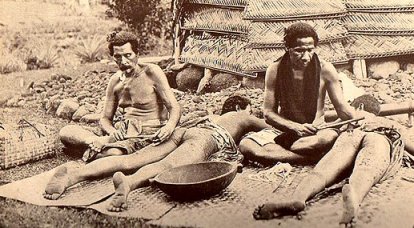Getting tattooed is a contemporary fashion statement. Most of us fancy ‘cool’ designs on our body. Who would have imagined that a tattoo could bring you a ‘curse’?
In recent years, the customers of the traditional Samoan Tattoo have faced deaths and injuries for using self-taught artists for traditional Samoan tattoos. According to the members of the Samoan Tribe, misuse of the traditional Samoan art of tattooing involves the risk of attracting an ‘ancient curse’.
The seniors of the Samoan tribe in New Zealand have appealed to stop fallacious tattooists from working in this business.

Recent mishaps include the death of a man, two men gravely injured, and a man from Auckland left psychologically traumatized. The person apparently responsible for the ill fate of the Auckland person seems to be a tattooist who disappeared halfway through work on his tattoo.
A ‘pe’a’ is a traditional tattoo, which is considered to be the rite of passage for Samoan men. Tafa Multialo, secretary for the Lagimalofie trust, warns people to affirm the cultural credentials of traditional tattooists before they get a ‘pe’a’ done on them. According to him, people have been left physically and psychologically damaged for having this traditional tattoo done on them either by unauthorized tattooists, or because the tattoo was not properly completed.

An ancient curse goes with the practice of `malofie’, Samoan tattooing. Self- taught artists are fraudsters not authorized to use traditional designs, they breach intellectual property and attract the curse
– he said.
According to him, the curse ‘lama avea’ can be the cause of death, disability and illness through poisoned ink, or injuries and accidents during the process of tattooing.
An example of a ‘cursed’ man in this context is Peter Williams, a former heavyweight boxer, whose lineage connects to the Samoan royalty. He paid tattooist Kasala Sanele in advance for tattooing his body. Unfortunately, Sanele went overseas before he finished working on the tattoo, thus leaving Williams in fear and anticipation of the ancient curse.
According to William’s wife, Charmeyne Te Nana-Williams, it was very important for her husband get rid of the curse, as he carries the title of Samanai, named after his antecedent – the first man to get a ‘pe’a’ done on him. To enjoy the honor assured by his lineage, he would first have to get the tattoo completed and the curse withdrawn. She also added that the curse would pass down to William’s children according to the traditions, if not withdrawn from him.
A ceremony has been performed by the members of the Lagimalofie trust as an attempt to lift the ancient curse from Williams.
The Ministry of Health’s Pacific health chief adviser Debbie Ryan said that Occupational Safety and Health had already banned a traditional Samoan tattoo practitioner from practicing his art after several mishaps in Wellington.
According to Ryan, the ministry intends to publish a guidebook with advice for those interested in getting a traditional Samoan tattoo done on them.

Tattoos are considered fashionable today, but the art of tattooing is indeed an ancient form of art belonging to some of the oldest races on this planet. Back then, the concept of Intellectual Property Rights was not resolved through court cases. Ancient ‘curses’ settled all dues.
The truth behind these ‘curses’ may actually carry a scientific and practical explanation. Cultural facets of the human civilization include complex patterns of social and psychological phenomenon. The inherent implications of these cultural facets sometimes have far-reaching consequences.
Via : Stuff NZ
Image Credit : Designboom, Janeresture


